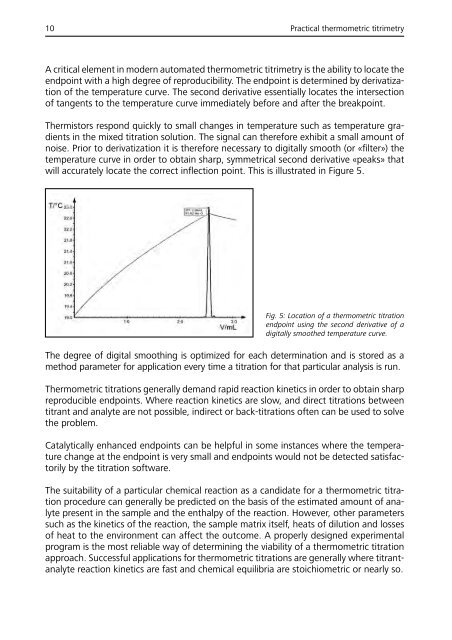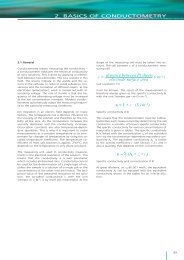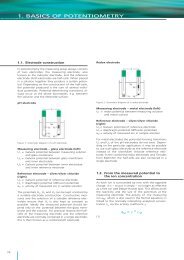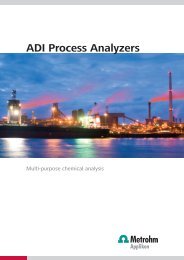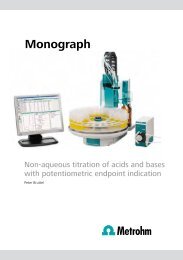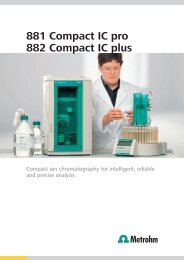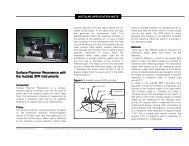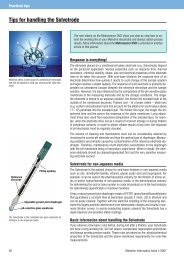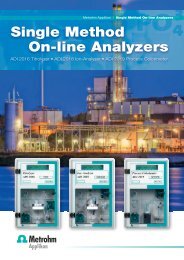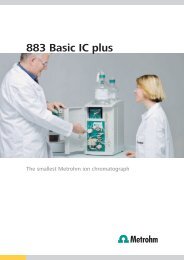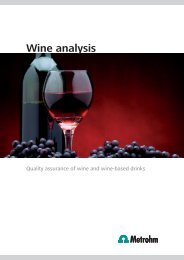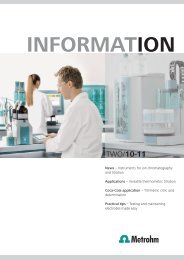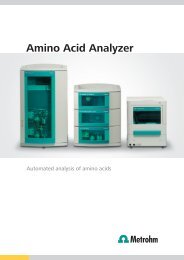Monograph - Metrohm
Monograph - Metrohm
Monograph - Metrohm
You also want an ePaper? Increase the reach of your titles
YUMPU automatically turns print PDFs into web optimized ePapers that Google loves.
10 Practical thermometric titrimetry<br />
A critical element in modern automated thermometric titrimetry is the ability to locate the<br />
endpoint with a high degree of reproducibility. The endpoint is determined by derivatization<br />
of the temperature curve. The second derivative essentially locates the intersection<br />
of tangents to the temperature curve immediately before and after the breakpoint.<br />
Thermistors respond quickly to small changes in temperature such as temperature gradients<br />
in the mixed titration solution. The signal can therefore exhibit a small amount of<br />
noise. Prior to derivatization it is therefore necessary to digitally smooth (or «filter») the<br />
temperature curve in order to obtain sharp, symmetrical second derivative «peaks» that<br />
will accurately locate the correct inflection point. This is illustrated in Figure 5.<br />
Fig. 5: Location of a thermometric titration<br />
endpoint using the second derivative of a<br />
digitally smoothed temperature curve.<br />
The degree of digital smoothing is optimized for each determination and is stored as a<br />
method parameter for application every time a titration for that particular analysis is run.<br />
Thermometric titrations generally demand rapid reaction kinetics in order to obtain sharp<br />
reproducible endpoints. Where reaction kinetics are slow, and direct titrations between<br />
titrant and analyte are not possible, indirect or back-titrations often can be used to solve<br />
the problem.<br />
Catalytically enhanced endpoints can be helpful in some instances where the temperature<br />
change at the endpoint is very small and endpoints would not be detected satisfactorily<br />
by the titration software.<br />
The suitability of a particular chemical reaction as a candidate for a thermometric titration<br />
procedure can generally be predicted on the basis of the estimated amount of analyte<br />
present in the sample and the enthalpy of the reaction. However, other parameters<br />
such as the kinetics of the reaction, the sample matrix itself, heats of dilution and losses<br />
of heat to the environment can affect the outcome. A properly designed experimental<br />
program is the most reliable way of determining the viability of a thermometric titration<br />
approach. Successful applications for thermometric titrations are generally where titrantanalyte<br />
reaction kinetics are fast and chemical equilibria are stoichiometric or nearly so.


